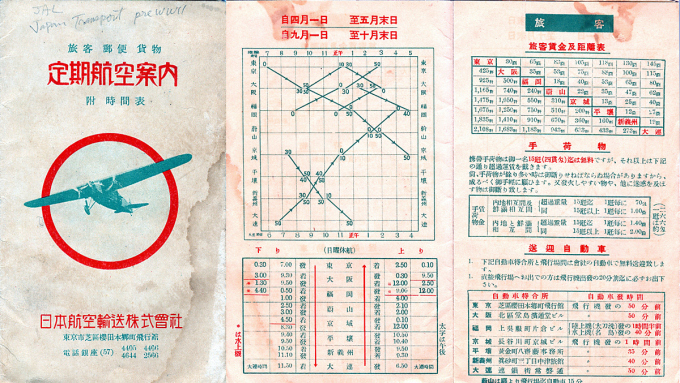“The scheduled speed-up of the Tokyo-Dairen line of the Japan Air Transport Co., Ltd., which runs the main airway in Japan, was put into effect at the end of 1935.
“In this speed-up, the hitherto used Fokker Super Universal Monoplane (Bristol Jupiter engine) will be replaced by a new and more powerful machine. Already the Airspeed Envoy (2 Lynx engines) monoplanes are running the Urusan-Dairen line. Flight on Sundays will also be started early [next] year.”
– Flying Magazine, Dec. 1936

Mitusbishi-built Hinazuru-type passenger transport derived from the Airspeed As.6 Envoy passenger plane, c. 1936, flying in the livery of the Japan Air Transport Co. (pre-war predecessor of Japan Air Lines). Two As.6 Envoy passenger transports were delivered to Japan for evaluation. Eleven Mitusbishi Hinazuru-type passenger-transports, based on the Envoy, were then produced under license and used for domestic air routes in Taiwan and Japan.
“The Airspeed As.6 Envoy was a British-built twin-engined low-wing cabin monoplane of all-wood construction apart from fabric covered control surfaces. It had a rearward retracting main undercarriage with a fixed tail-wheel. The Envoy was acclaimed as being superior to the Super Universal by having ‘twin-engined safety’, better performance, lower operating costs and easier maintenance.
Mitsubishi/Gasuden Hinazaru passenger-transport airplane, c. 1940, in the livery of the Japan Postal System. The Hinazuru was manufactured under license, replacing the Airspeed Envoy it resembled, in Japanese airline service. The stylized 〒 is still used on the signs of post offices and on post boxes, and is derived from the Japanese word teishin (“communication”).
“Two of the Envoy-I aircraft were delivered to Japan in 1935, including one for evaluation by the Japan Air Transport Co. With the acquisition of a manufacturing license, Japanese production of the Mitsubishi Hinazuru-type passenger transport started in 1937 at the Nagoya Mitsubishi factory, initially powered by Gasuden Jimpu engines, but later using license-built Armstrong Siddeley Lynx or Wolseley Aries Mk.III engines. Eleven aircraft were built at Nagoya before production ceased in 1941.
“Japanese-production aircraft were used on domestic route services of Nihon Koku Yuso KK (later to become Greater Japan Airways) mainly on routes from Tokyo to Fukuoka, and Tokyo to Sapporo.”
– Wikipedia
Performance
Maximum speed: 152kt (175mph)
Service ceiling: 5020m (16,470ft)
Range: 558nm (642mi)




Pingback: Haneda Tokyo International Airport | Old Tokyo
Pingback: Haneda Airfield (Pre-war) | Old Tokyo
Pingback: Asahi Shimbun Building, c. 1930. | Old Tokyo
Pingback: Japan Air Transport Co., c. 1933. | Old Tokyo
Pingback: Nakajima AT-2 (Ki-34), 1937. | Old TokyoOld Tokyo